Do you have an RV that needs a good wash? If so, you’re in luck! In this comprehensive guide, we will walk you through the process of how to wash an RV like a pro. We’ll answer some common questions and provide some useful tips to make the process easier and more efficient. So whether your RV is dirty from a recent road trip or just needs a good cleaning, follow these steps and get it looking new again!
Table of Contents
Benefits of a Clean RV
After you’ve washed your RV, it’s important to think about the benefits of having a clean one. Not only will it look great, but a well-maintained vehicle can also help protect your investment and improve longevity.
Plus, when maintained properly with regular cleaning, an RV is less likely to attract unwanted insects or pests – something that could interrupt future camping trips if left unchecked.
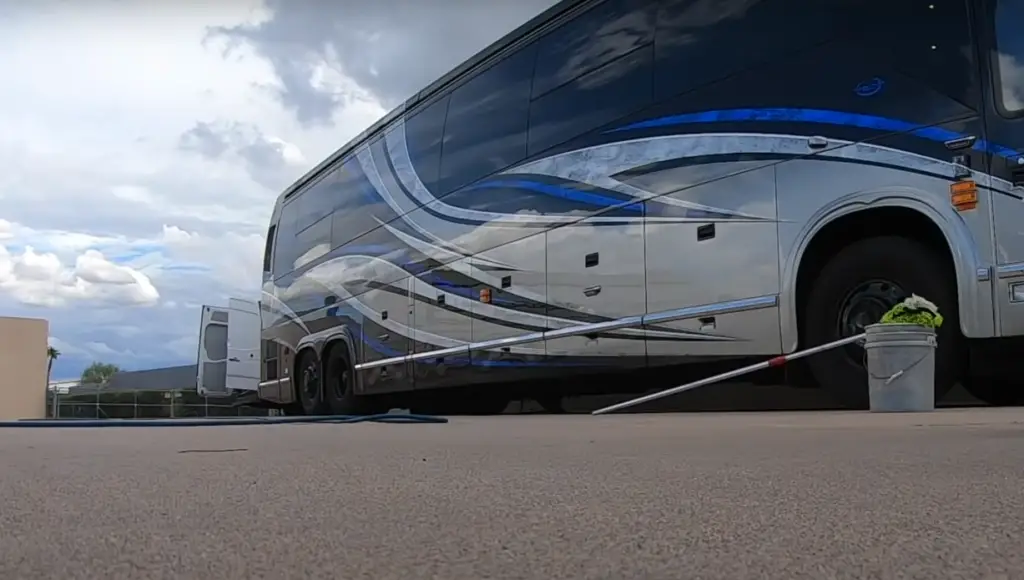
Finally, having a clean RV will help keep your vehicle running at peak performance levels. Regular washing sessions can help identify any potential problems that may develop over time and allow you to address them before they become too serious. This means fewer costly repairs down the line and more worry-free camping trips for years to come!
How Often Should an RV be Washed?
It is recommended to wash your RV at least every 3 months, or as needed if you observe dirt and other substances building up. The frequency of washing may need to be increased depending on the environment you use your RV in (e.g., more often in wet climates than dry). It is also important to follow the manufacturer’s instructions and check your warranty for any specific recommendations. [1]
When it comes to washing the exterior of an RV, it’s essential that you use a non-abrasive cleaner designed specifically for fiberglass or metal surfaces, such as those made by Turtle Wax or Meguiar’s. If you choose an all-purpose cleaner, make sure it doesn’t contain ammonia — as this could damage the paint or other finishes.
For the interior of your RV, you should use mild detergent and warm water to clean surfaces such as counters, walls, floors, and furniture. Vacuuming these areas first will help remove any dirt that has collected over time. You can also use an upholstery cleaner or carpet cleaner on fabric if needed. Be sure to test any cleaning products in discreet areas before using them all over, as some chemicals can cause staining or discoloration.
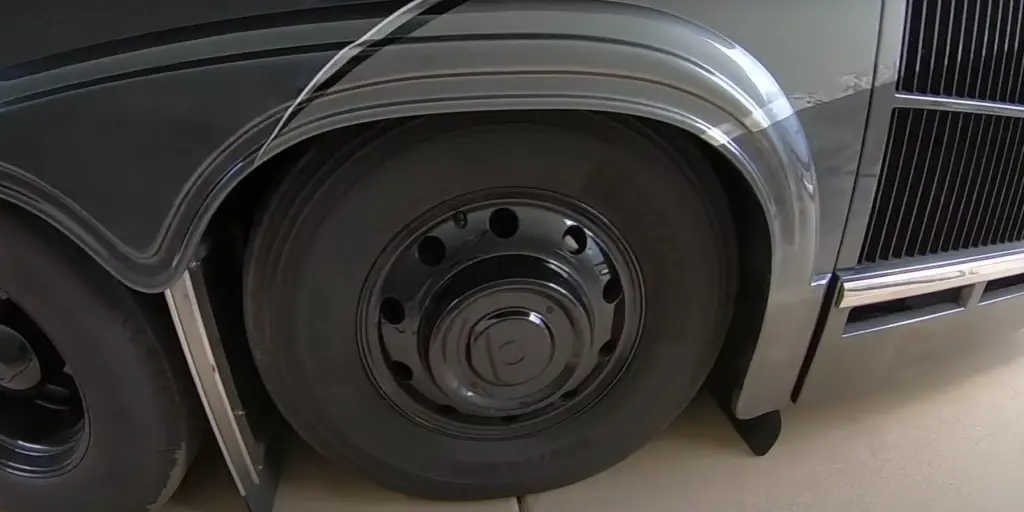
It’s important to remember that washing an RV is not just about keeping it looking nice — regular maintenance helps protect your investment from costly repairs down the road! So be sure to give your RV a good scrubbing every few months, and you’ll be glad you did.
Ways to Wash an RV
When it comes to washing an RV, there are several different methods you can use. Generally speaking, the most popular option is to use a pressure washer and some sort of cleaning product. This is usually done from top to bottom of your RV which helps to rinse away dirt, dust, and debris from all angles.
Another common way to wash an RV is by hand with a bucket of warm water and soap or detergent. Hand-washing your RV gives you more control over the areas you’re cleaning and can be less damaging than using a pressure washer on delicate surfaces such as windows or decals.
If you have no access to running water, one alternative method is to mix soapy water in a spray bottle and use a sponge or cloth to scrub off dirt and grime. This method requires more manual labor, but it’s an effective way to clean your RV without having access to running water.
When it comes to washing the roof of your RV, you can also use a pressure washer or hand wash with soapy water. Make sure to take extra caution when working on the roof as it is easier than other surfaces on the RV to damage due to its delicate construction. Before beginning, inspect for damage such as cracks in the sealant that need repair before washing begins.
Directions for Washing an RV
Now that you know what to expect, here are some detailed instructions for how to wash an RV:
- Start by giving the outside of the RV a good scrubbing with a soft brush and soapy water. Rinse it off with clear water and let it dry completely before moving on to the next step.
- Next, use a high-pressure cleaner or power washer to remove any caked-on dirt or debris. You may need to use multiple passes until all the dirt is removed. Make sure to follow the manufacturer’s instructions when using a pressure washer as they can cause damage if misused.
- Once everything is clean, apply wax in small sections using circular motions. Make sure to use a wax specifically for RVs, as other types may not be suitable.
- Let the wax sit for 10-15 minutes before buffing it off with a clean, dry cloth and some elbow grease!
- For extra protection, you can apply a coat of protectant or sealant. Be sure to follow the manufacturer’s instructions when using either of these products.
- Lastly, don’t forget about the windows! Clean them with glass cleaner and let them dry completely before applying wax or any type of sealant to further protect them from dirt and debris in the future.
What You Need
Before you begin, make sure you have the following supplies:
- Soft brush
- Soapy water
- High-pressure cleaner or power washer
- Wax specific for RV’s
- Clean, dry cloths
- Glass cleaner
- Protectant or sealant (optional)
Now that you’re ready to go, give your RV a thorough washing and enjoy the results! Happy cleaning!
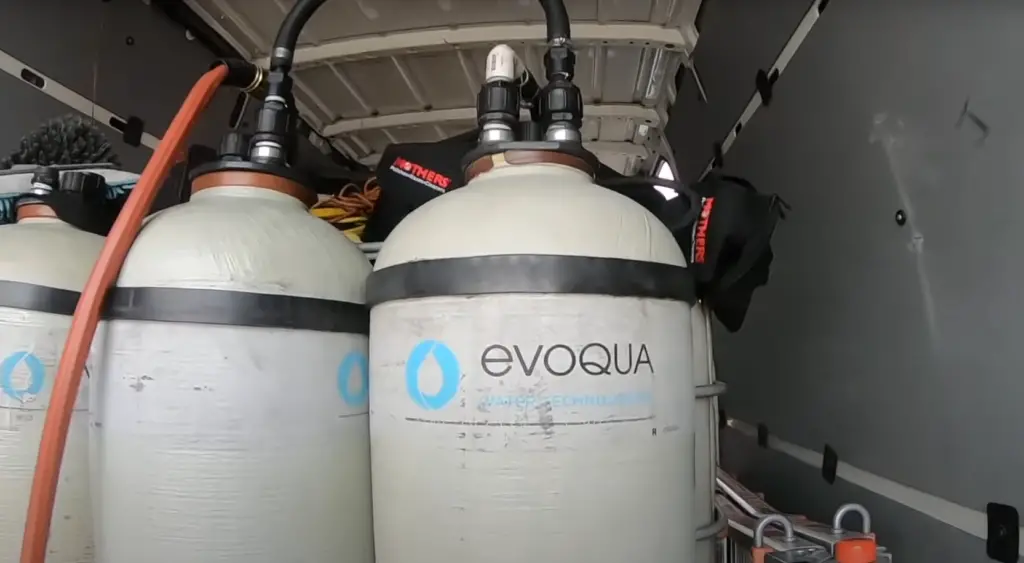
Manual Cleaning vs. Automatic Cleaning
When it comes to cleaning an RV, there are two main methods: manual cleaning and automatic washing. Manual cleaning involves using a soft brush and soapy water to scrub the outside of your RV, followed by waxing or sealing for protection. Automatic washing requires less effort because the machine does most of the work for you, but some people prefer the more hands-on approach of manual cleaning. Whichever method you choose, make sure to do your research and understand how each type works before beginning.
Snow Foam Cannon Directions
Snow foam cannons are a great way to pre-wash your RV before you start the main cleaning task.
Here’s how to use one:
- Fill the snow foam cannon with a mixture of water and detergent. A general rule of thumb is 2 ounces of detergent per liter of water, but this can vary depending on the strength of the detergent used.
- Connect the snow foam cannon to a pressure washer or garden hose, then turn on the power source (if using a pressure washer). Adjust the nozzle so that it’s spraying thick foam.
- Start at the top of your RV and slowly make your way down, being sure to cover every inch with foam.
- Allow the foam to sit for 5-10 minutes before rinsing it off thoroughly with water from your pressure washer or garden hose.
Once you’ve pre-washed your RV using a snow foam cannon, you can move on to the more detailed cleaning steps that will help you get your vehicle looking great! Remember, always wear protective gear while cleaning your RV, such as gloves and eye protection. Happy washing!
Cautions of RV Washing
When it comes to washing an RV, there are a few cautions you should be aware of. First, ensure your RV is properly supported and level before you begin cleaning. If the vehicle is not sitting on a flat surface, water may collect in areas that can become damaged by standing water. You should also avoid using high pressure washers or any kind of chemical-based cleaners on your RV’s exterior surfaces as these can cause damage to the finish or even create irreversible stains. When cleaning windows and glass surfaces, use mild soap and soft cloth instead of aggressive scrubbing that could scratch up the glass. Lastly, always make sure you are using the correct detergent for each job; some soaps or chemicals are not designed for use on rubber, metal, plastic or fiberglass surfaces. Be sure to read the labels carefully and follow any special instructions to ensure you are using the correct product for each cleaning job.
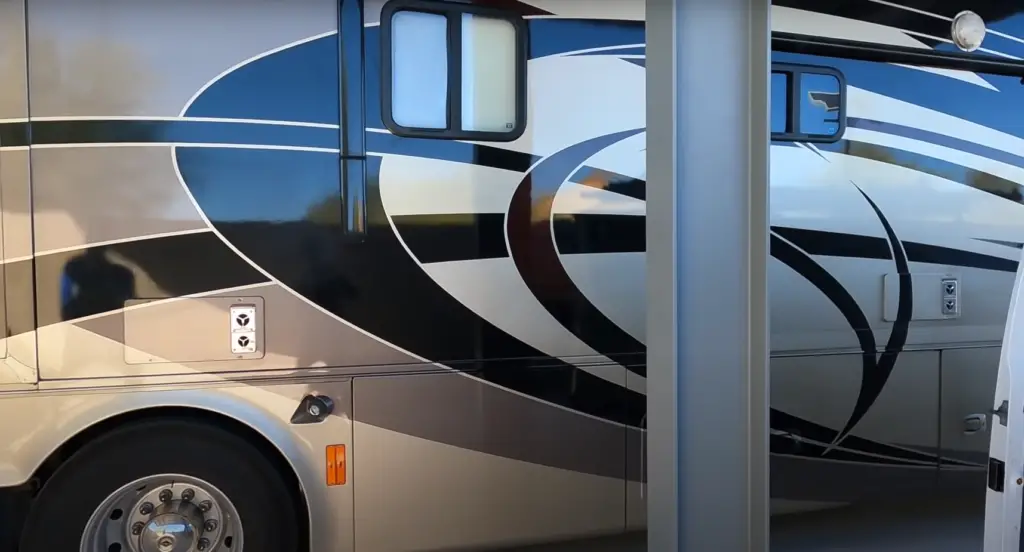
Different Washing Methods for Different RVs
Depending on the size of your RV and the type of material it is made from, you may need to use different cleaning methods for optimal results. If you have a large RV and don’t feel like going through the task of hand-washing, you can always opt to hire professionals or rent a pressure washer.
For smaller RVs, hand washing is usually sufficient. You will want to begin by hosing down the entire exterior with warm water using a low-pressure hose nozzle. This helps loosen any dirt and debris that may be stuck in crevices or other hard-to-reach areas.
Next, use a soft brush with an all-purpose cleaner or soap specifically formulated for RV care on all the surfaces of your vehicle. Be sure to pay special attention to any areas with tougher grime, such as windows and decals. Scrub away any dirt with the brush to ensure a thorough cleaning.
For metal parts, you can use a non-abrasive metal polish to help restore their shine and protect them from corrosion. Finally, be sure to rinse off all soap residue after washing and dry your RV thoroughly with a chamois cloth before storing it away in a clean environment.
Using these steps will help keep your RV looking like new for years to come! Regular cleaning not only helps maintain the appearance of your RV but also helps prevent damage caused by dirt and grime build-up over time. So, whether you’re just getting started or have been washing RVs for years, following a few easy steps can make sure your RV is always looking its best.
Washing the RV Windows
When it comes to washing the RV windows, there are a few tips and tricks that can help make the process easier. First of all, avoid using harsh chemicals or abrasive pads on your windows as these can damage them. Instead, use a mix of warm water and mild soap to create a gentle cleaning solution. You may also want to purchase a dedicated window-washing solution designed specifically for RVs if you like.
Once you’ve mixed up your cleaning solution, spray it directly onto the window or apply it with a cloth. Gently scrub any dirt or streaks away with soft cloths until the windows are shining clean again! Remember to rinse off any excess cleaner before allowing the window to dry completely – this will help prevent streaks from forming.
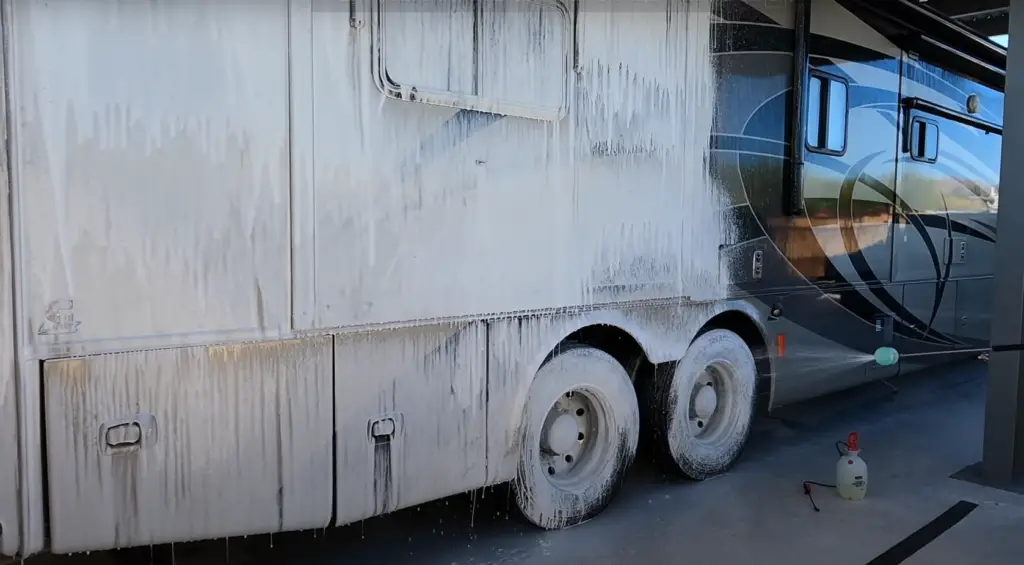
Finally, for extra shine and protection, you may want to apply a dedicated window protectant after cleaning.
Cleaning the RV Awnings
When it comes to cleaning your RV awnings, the process is much easier than most people think. To start, make sure all fabric and screens are completely dry before you begin. Next, take a soft-bristled brush and gently scrub away any dirt that has accumulated on the material. It’s important to use gentle pressure as you don’t want to damage or tear the fabric. If there are tough spots of debris or bird droppings that just won’t come off with brushing, try using a mild detergent solution for spot treatment.
Once you have brushed away any dirt or debris from the surface, it’s time to rinse down your RV awnings with clean water until all soap residue is removed. To finish, prop open the awnings so they can air-dry in the sunshine. This will help to reduce mildew, mold and leave you with a beautiful clean awning!
Washing the RV Tires
Tires can be a difficult part of washing an RV. You want to make sure that you are cleaning all of the dirt, mud, and grit before moving on to other parts of the RV. To do this, use a tire brush or scrubber to get in those hard-to-reach areas between your tires. First wet down your tires with some water and then apply some tire cleaner. Make sure that you are using a product that is specifically made for tires as it is designed to break down the grime without being too harsh on the rubber. Once applied, let it sit for about 5 minutes before scrubbing it off with your brush or scrubber. Give them one final rinse when done and they should be looking good as new. You may also choose to purchase a tire shine product to give them that extra sparkle if you want. [2]
When you’re done cleaning the tires, make sure that you are rinsing off any of the cleaner or tire shine before moving on to other parts of your RV so that it does not stain anything else. Finally, when all is said and done, dry off the tires with a microfiber towel to avoid water spots. With a little bit of elbow grease and some TLC, your RV’s tires will be looking like new!
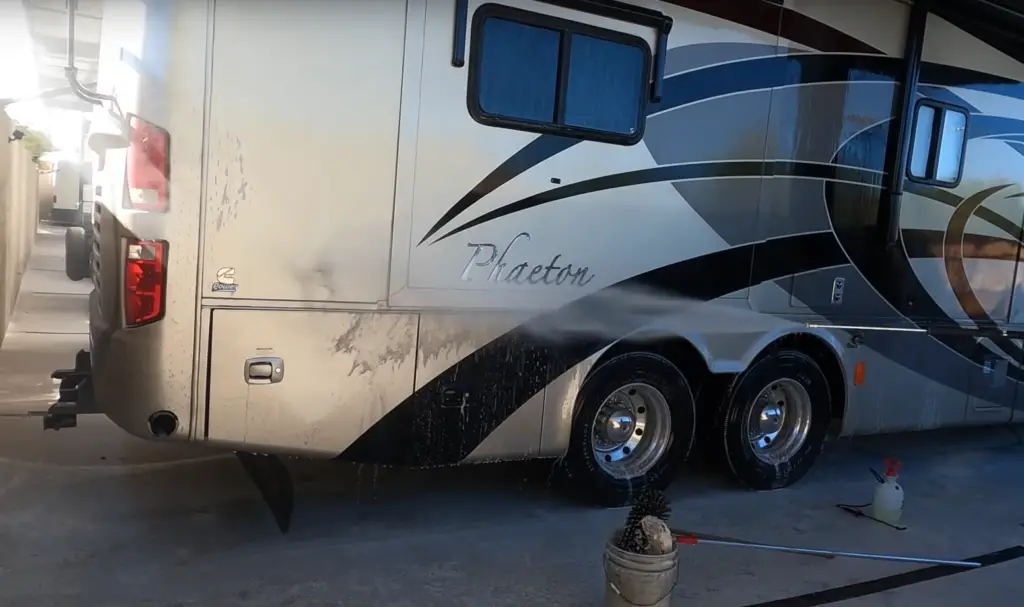
FAQ
What is the best way to wash my RV?
The best way to wash your RV is with a two-bucket system. Start by filling one bucket with warm water and car-washing soap, and the other with clean water only. Use a large soft brush or mitt to apply the soapy mixture to your RV’s surface, then rinse using the bucket of clean water. A microfiber cloth may be used on stubborn spots or for final polishing.
For extra protection from dirt and grime, consider applying a coat of wax after each wash. Depending on your climate, this should be done at least once a year (more often if you live in an area that experiences extreme weather changes). Wax helps create a protective barrier between your vehicle and the elements. [3]
Do you need special soap to wash a RV?
No need to invest in special soaps for your RV. Regular, mild dish soap is sufficient for most wash needs. If you find that the soap doesn’t get rid of all the dirt and grime on your RV, you may want to try a degreaser or wheel cleaner specifically designed for cleaning RVs.
It’s also important to avoid using harsh chemicals like bleach or ammonia, as they can cause damage to the paint and other materials on an RV. [4]
What is the best soap to wash a RV?
The best soap to use when washing an RV is one that is specifically formulated for the job. If you have a more modern RV, check the manual for any special instructions on what type of soap you should use. Generally speaking, a mild detergent with low alkalinity and no bleach is recommended. A good quality car wash soap can also be used; it will clean the RV without damaging the paint or finish. When selecting your soap, avoid harsh chemicals such as ammonia and solvents that could damage the exterior surfaces of your RV. You should also look for a product that has wax added in order to help protect your vehicle’s paint from UV rays and other environmental contaminants while keeping it looking new. Finally, make sure you choose a product that is biodegradable and environmentally friendly.
Once you have chosen your soap, it’s time to get started! Ensure that your RV is free from any dirt and debris before beginning. If your RV has a wax finish, use a carnauba wax-based product to keep the surface protected during washing. Begin by wetting down the RV with warm water, then apply the soap in an even layer using a soft cloth or sponge. After scrubbing gently, rinse off the soap with clean water and dry the vehicle with an absorbent microfiber towel. Finally, finish off with a coat of wax to seal in shine and protection.
What can I use to clean my fiberglass RV?
When it comes to washing a fiberglass RV, it’s important to use the right products so you don’t damage the finish. Start by using a mild detergent and warm water solution, making sure not to use anything too abrasive. For more stubborn grime and dirt, there are special RV cleaning products available that are specifically designed for fiberglass surfaces. You can also look into using a protectant or sealant after washing your RV to help preserve its condition and extend its lifespan. Finally, make sure to never use dish soap or other household cleaners as they may leave permanent streaks or discoloration on your fiberglass surface. [5]
Useful Video: Easy RV Dry Wash! | Blue Beacon | DIY Wash Wax All! | Changing Lanes!
Conclusion
At the end of the day, washing your RV is a bit of a labor-intensive task that requires considerable time and effort. However, if you dedicate yourself to keeping it clean and properly cared for, you will reap the rewards by having an RV that looks great and performs well year after year. You should also make sure to check in with your local RV supplier or mechanic to ensure that everything is running smoothly and as it should be. Following these tips on how to wash an RV is a good first step towards keeping your traveling home in top condition!
Happy cleaning!
References
- https://www.eltororvservice.com/how-often-should-you-wash-your-rv/
- https://info.glass.com/how-to-wash-rv/
- https://www.campbellrv.com/blog/6-tips-washing-cleaning-rv-right-way/
- https://www.theoutpostrv.com/blog/how-to-wash-your-travel-trailer–3254
- https://olivertraveltrailers.com/blog/everything-you-need-to-know-to-take-care-of-your-fiberglass-rv/

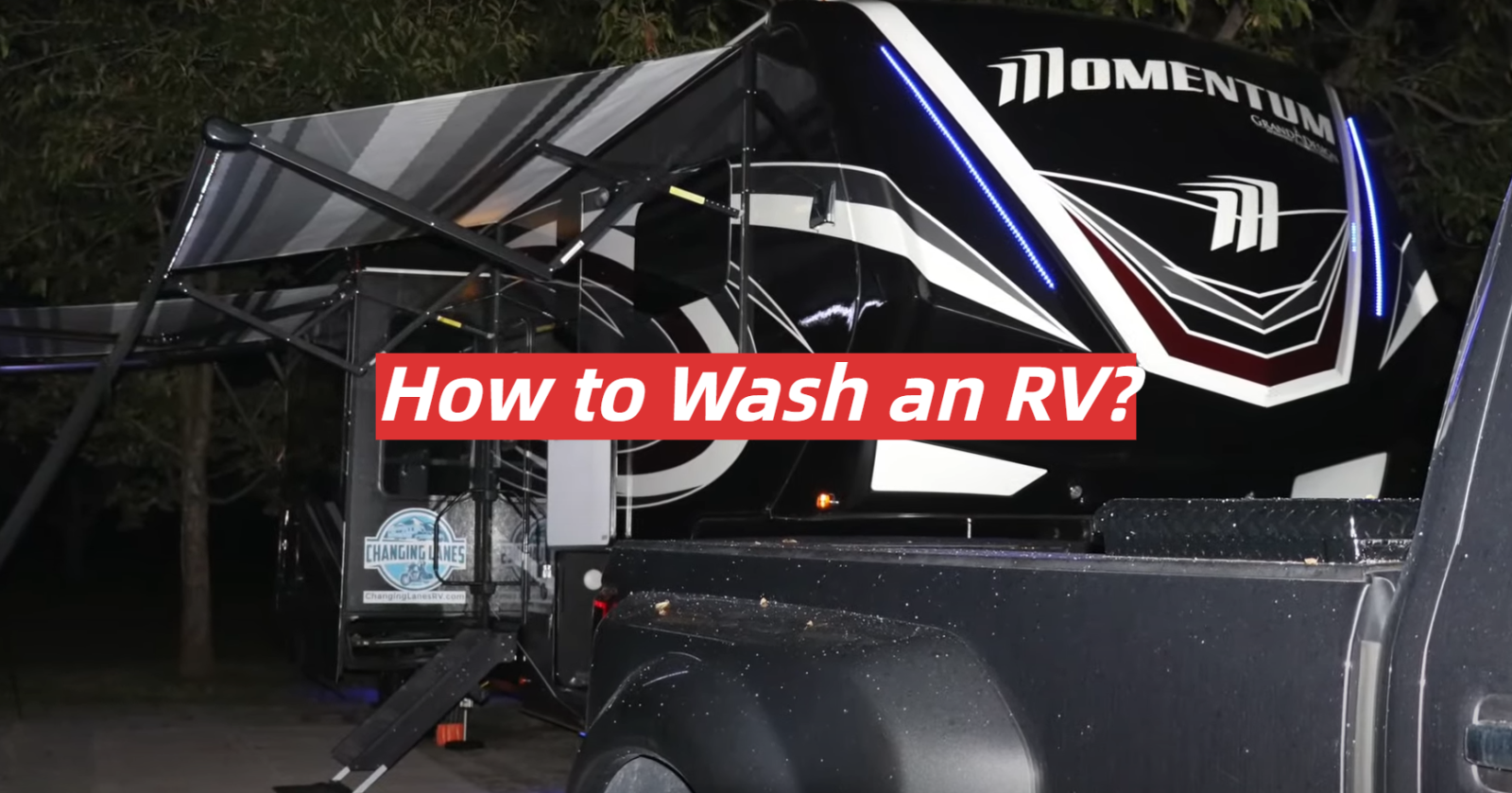
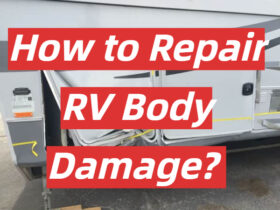
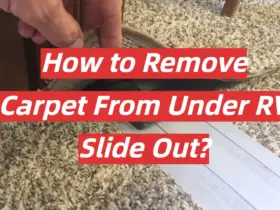
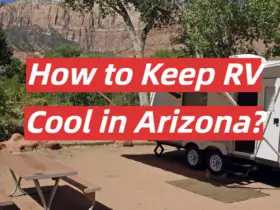
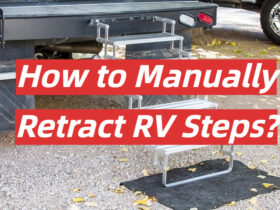
Leave a Reply